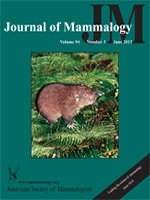Arvicoline voles do not possess sophisticated mechanisms to tolerate prolonged fasting and can starve to death in less than 24 h. Two experiments were performed to determine if the common vole (Microtus arvalis) and the tundra vole (M. oeconomus) have thermoregulatory adaptations to enhance survival during food deprivation or in winter, and to reveal the possible presence of ultradian body temperature (Tb) rhythms. Laboratory-bred voles (n = 5–6 for both species) were equipped with intra-abdominal data loggers that registered Tb every 10 min and were subjected to 12-h fasting periods during photophase and scotophase. In addition, 10 animals of both species were placed in outdoor cages at natural ambient temperature (Ta) and their Tb was registered at 3-h intervals between October and June. Fasted voles did not enter torpor, but the average 24-h Tb decreased by 0.2–0.5°C in winter, yielding modest energy savings. The decrease in the Tb correlated with Ta but not photoperiod and could, thus, be interpreted as a response to cold. Tundra voles displayed short Tb rhythms of 3–8 h in the laboratory and their individual Tb fluctuations were synchronized. Arvicolines are suggested as promising models to study Tb rhythms in small mammals.
How to translate text using browser tools
1 June 2013
Body temperature rhythms in Microtus voles during feeding, food deprivation, and winter acclimatization
Petteri Nieminen,
Esa Hohtola,
Anne-Mari Mustonen
ACCESS THE FULL ARTICLE

Journal of Mammalogy
Vol. 94 • No. 3
June 2013
Vol. 94 • No. 3
June 2013
fasting
Microtus arvalis
Microtus oeconomus
overwintering
temperature loggers
voles




